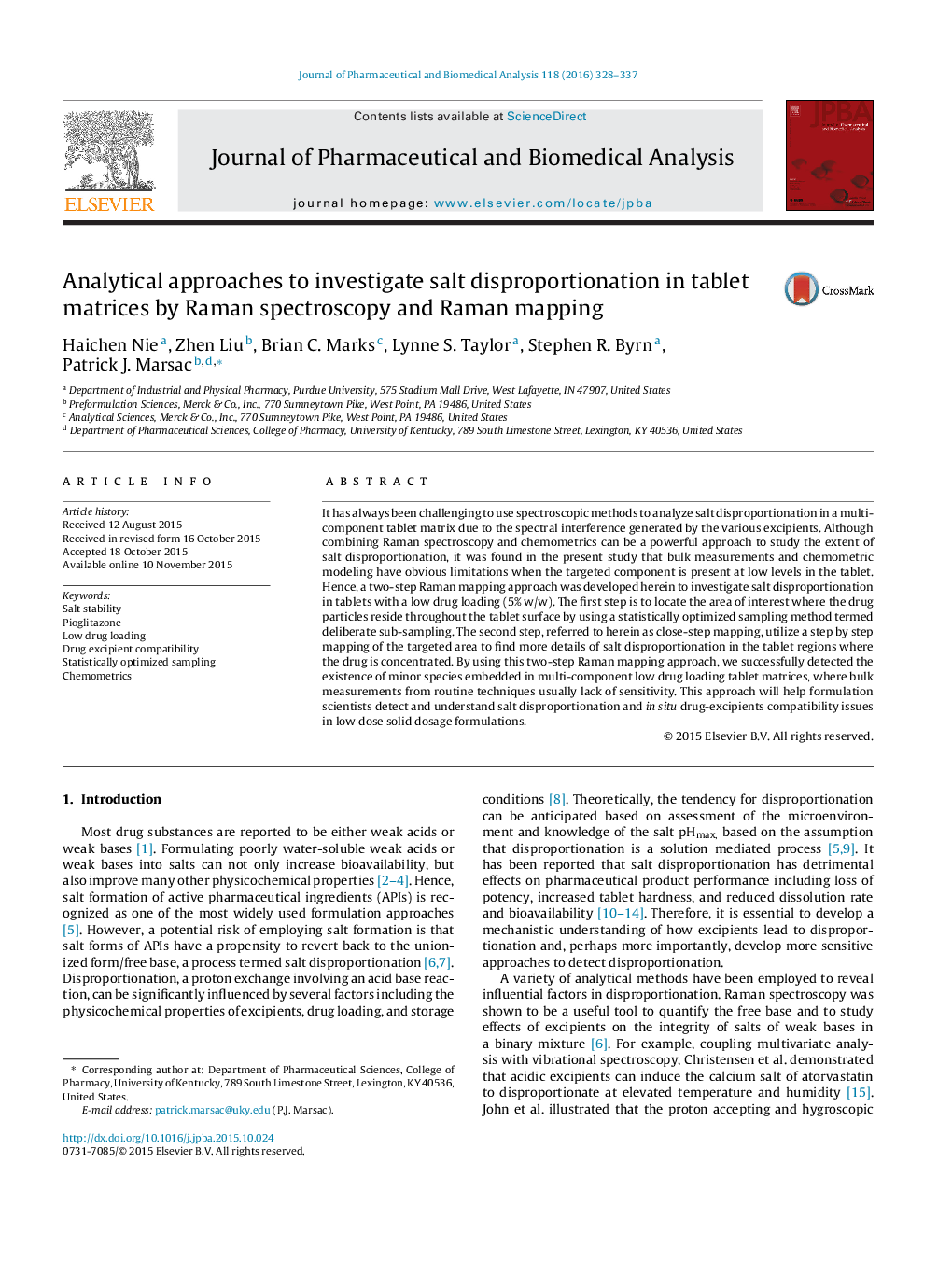| کد مقاله | کد نشریه | سال انتشار | مقاله انگلیسی | نسخه تمام متن |
|---|---|---|---|---|
| 1220636 | 1494617 | 2016 | 10 صفحه PDF | دانلود رایگان |
• In the present study, bulk measurements and chemometric modeling have obvious limitations when the targeted component is present at low levels in a multi-component tablet. A two-step Raman mapping approach was developed herein to investigate salt disproportionation in tablets with a low drug loading (5% w/w).
• Utilizing the proposed two-step mapping approach, we successfully observed the presence of PIO free base in a model tablet exposed at ambient conditions, which could not be detected by Raman bulk measurements.
• Finding of this paper suggests that the proposed two-step Raman mapping approach has the potential to detect minor species in a multi-component tablet matrix. Moreover, this finding also indicates that magnesium stearate could lead to the disproportionation of PIO-HCl even at ambient conditions (below the reported critical R.H.).
• To the best of our knowledge, this is the first time that Raman mapping has been employed to study salt disproportionation in a multi-component tablet matrix. The success of applying Raman microcopy to detect the product of disproportionation, which is a minor component embedded in a tablet, will help formulation scientists better understand in situ drug-excipients compatibility.
It has always been challenging to use spectroscopic methods to analyze salt disproportionation in a multi-component tablet matrix due to the spectral interference generated by the various excipients. Although combining Raman spectroscopy and chemometrics can be a powerful approach to study the extent of salt disproportionation, it was found in the present study that bulk measurements and chemometric modeling have obvious limitations when the targeted component is present at low levels in the tablet. Hence, a two-step Raman mapping approach was developed herein to investigate salt disproportionation in tablets with a low drug loading (5% w/w). The first step is to locate the area of interest where the drug particles reside throughout the tablet surface by using a statistically optimized sampling method termed deliberate sub-sampling. The second step, referred to herein as close-step mapping, utilize a step by step mapping of the targeted area to find more details of salt disproportionation in the tablet regions where the drug is concentrated. By using this two-step Raman mapping approach, we successfully detected the existence of minor species embedded in multi-component low drug loading tablet matrices, where bulk measurements from routine techniques usually lack of sensitivity. This approach will help formulation scientists detect and understand salt disproportionation and in situ drug-excipients compatibility issues in low dose solid dosage formulations.
Figure optionsDownload as PowerPoint slide
Journal: Journal of Pharmaceutical and Biomedical Analysis - Volume 118, 25 January 2016, Pages 328–337
